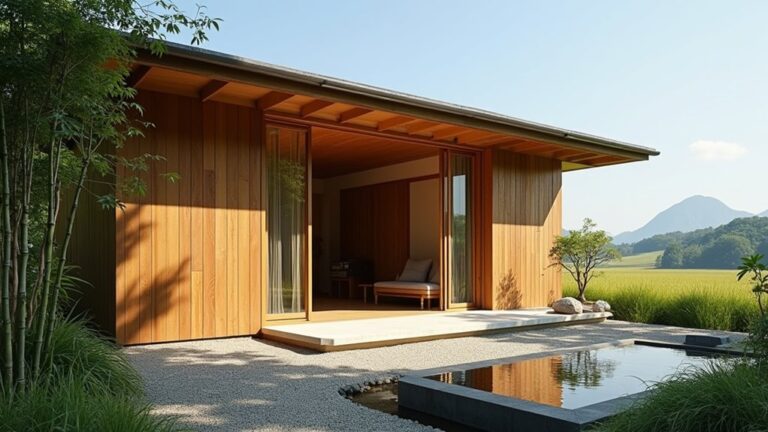As I explore the world of modern Japanese farmhouse exteriors, I find a unique blend of simplicity and nature that captivates me. These designs, with their natural materials and minimalist aesthetics, evoke a sense of tranquility. Each farmhouse tells a story of harmony and innovation. I’m curious to see how these elements come together and what makes them stand out in today’s architectural landscape. Let’s uncover the details that make these homes truly inspiring.
Embracing Natural Materials
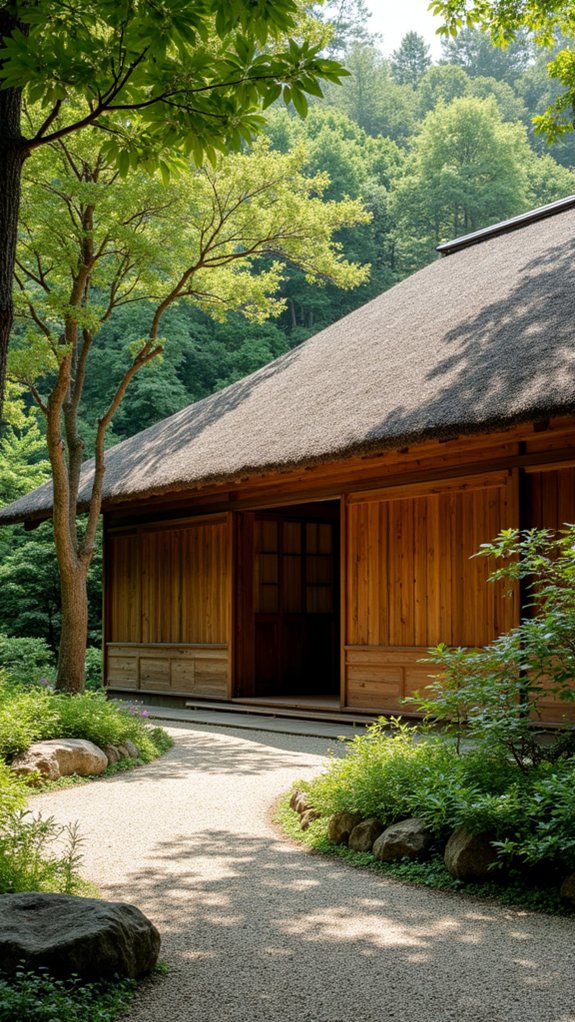
When I think about modern Japanese farmhouse exteriors, the use of natural materials stands out as a defining characteristic.
Wood, stone, and bamboo create a warm, inviting atmosphere that blends beautifully with the surrounding landscape.
I love how these materials not only reflect nature but also age gracefully, adding charm and character over time.
It truly embodies a sustainable lifestyle.
Minimalist Aesthetics
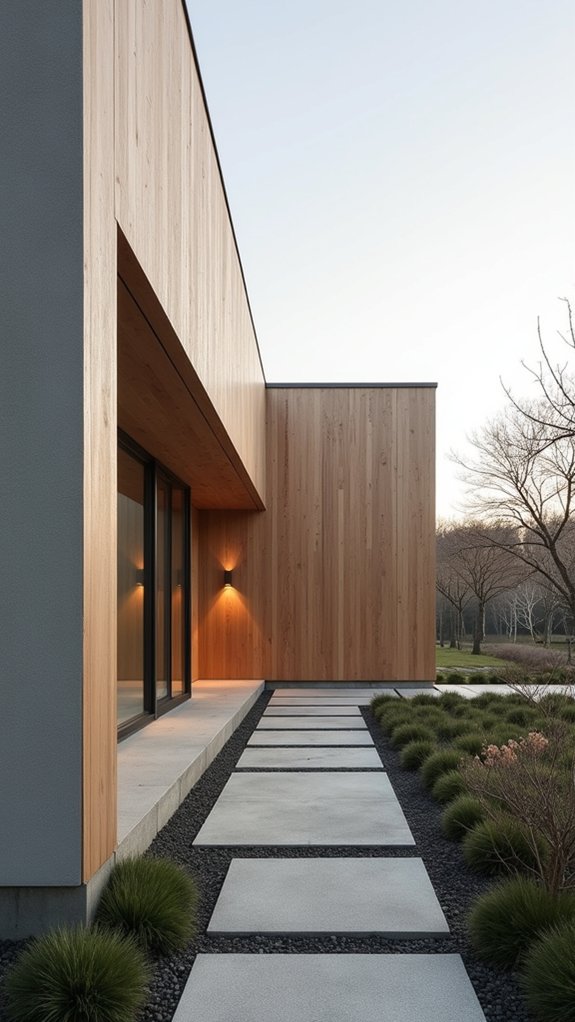
While I admire the rustic charm of traditional designs, minimalism in modern Japanese farmhouse exteriors captivates me with its clean lines and uncluttered spaces.
The simplicity allows the beauty of natural materials to shine, creating a harmonious atmosphere.
I love how these homes embrace light, using large windows and open layouts that invite the outdoors in, fostering a sense of peace and serenity.
Serene Garden Spaces
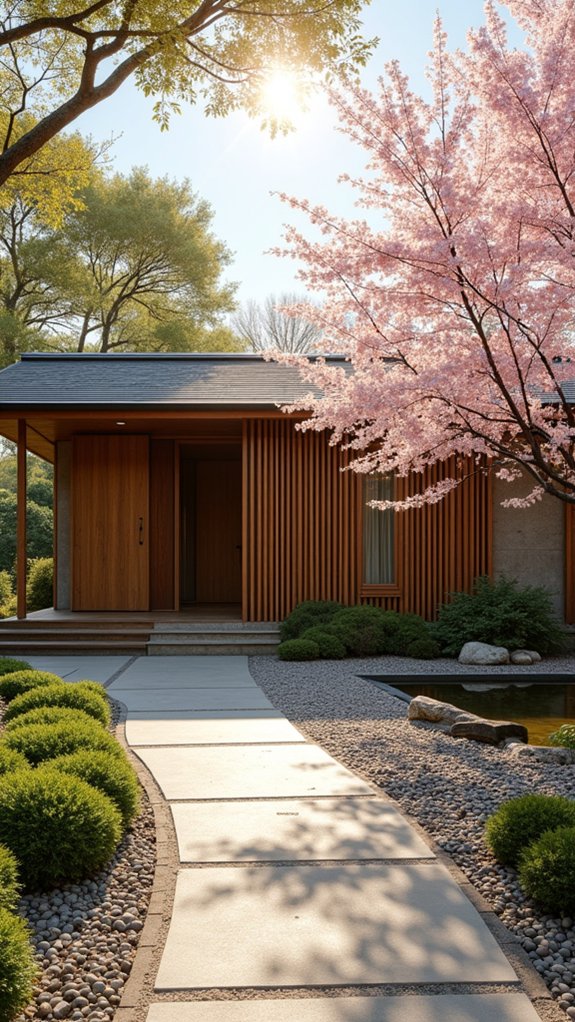
The minimalist aesthetics of modern Japanese farmhouse exteriors naturally extend into serene garden spaces that enhance the overall tranquility of these homes.
I love how these gardens often feature simple layouts, with carefully chosen plants and natural materials.
The balance of stone, wood, and greenery creates a peaceful retreat, inviting me to pause, breathe, and connect with nature in a beautifully understated way.
Harmonious Color Palettes
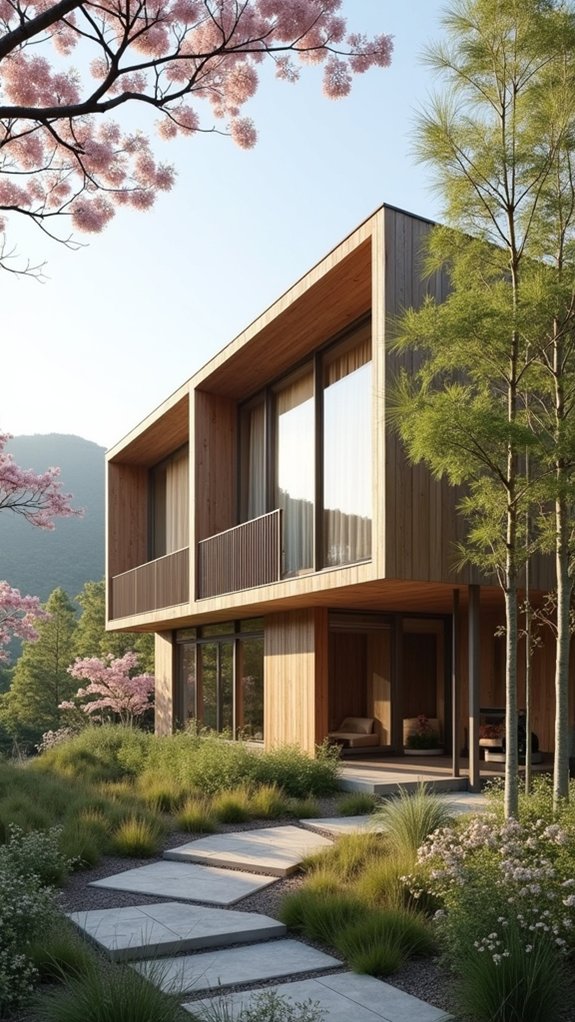
Color plays an essential role in defining the character of modern Japanese farmhouse exteriors.
I love how these homes often embrace neutral tones, blending seamlessly with nature. Soft grays, warm earth tones, and muted greens create a tranquil atmosphere.
This harmonious palette not only enhances the beauty of the architecture but also fosters a sense of peace, inviting you to relax and connect with the surroundings.
Innovative Roof Designs
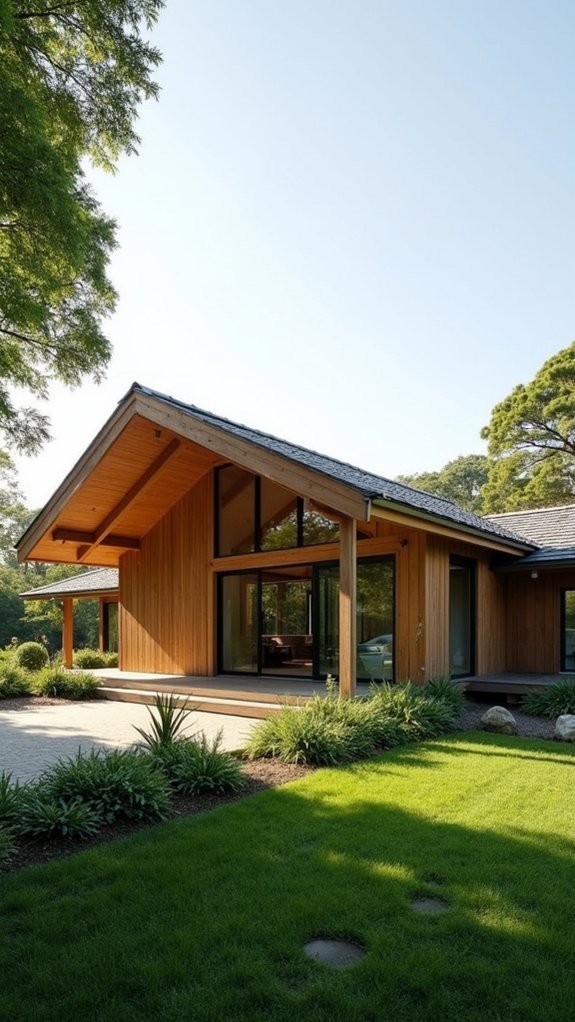
As I explore modern Japanese farmhouse exteriors, I’m often captivated by the innovative roof designs that elevate their aesthetic appeal.
These roofs, often featuring dramatic angles or gentle curves, not only add visual interest but also provide practical benefits like improved drainage and insulation.
Each design feels intentional, blending seamlessly with nature while reflecting the simplicity and beauty inherent in Japanese culture.
Open-Concept Layouts
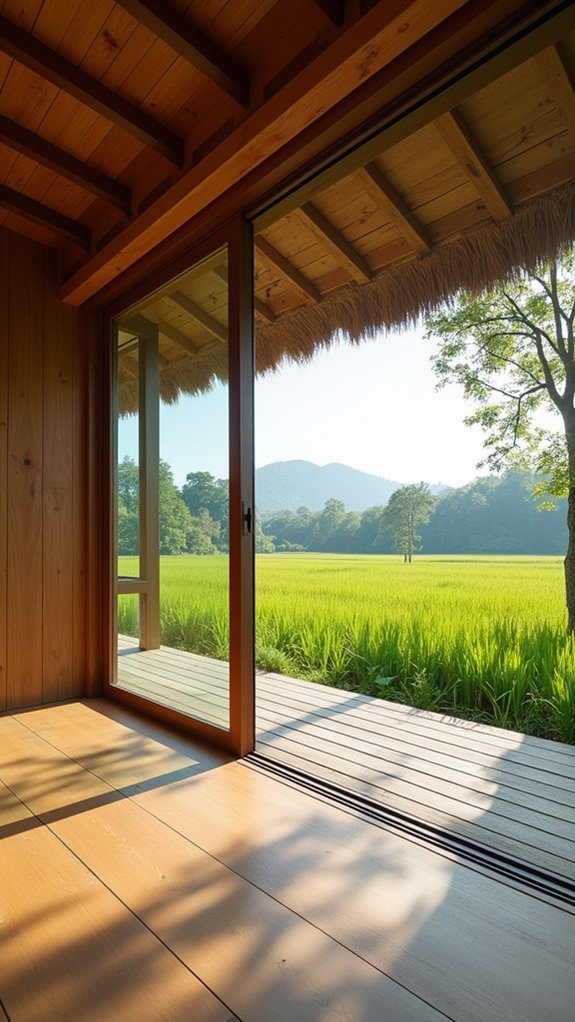
There’s something truly special about the open-concept layouts of modern Japanese farmhouses.
I love how they seamlessly blend living spaces, creating a warm and inviting atmosphere. The flow between the kitchen, dining, and living areas fosters connection and encourages interaction.
Large windows allow natural light to flood in, enhancing the sense of space while bringing the beauty of nature indoors.
Natural light pours through expansive windows, creating an airy ambiance that connects the indoors with the stunning outdoors.
It’s simplicity at its finest.
Sustainable Building Practices
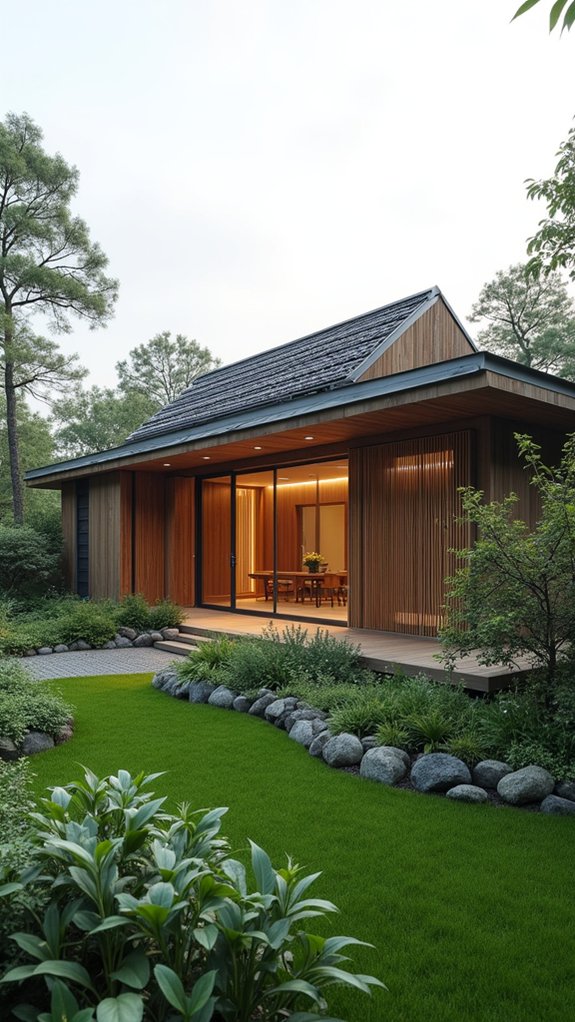
While many modern Japanese farmhouses embrace traditional aesthetics, they also prioritize sustainable building practices that respect the environment.
I love how these homes often utilize local materials, minimizing transportation emissions. They incorporate energy-efficient designs, harnessing natural light and ventilation.
Plus, many feature green roofs or rainwater harvesting systems, blending seamlessly with nature while promoting environmental stewardship.
It’s a beautiful way to live responsibly.
Traditional Craftsmanship Meets Modern Design
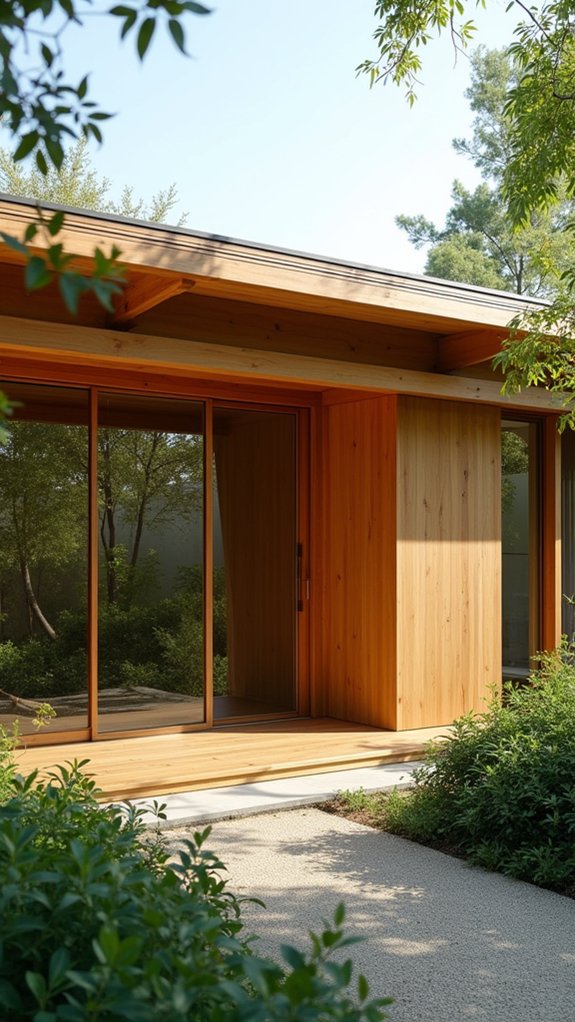
Embracing the essence of traditional craftsmanship, modern Japanese farmhouses beautifully blend age-old techniques with contemporary design elements.
I admire how artisans incorporate natural materials like wood and clay, creating a warm, inviting feel.
The clean lines and minimalist aesthetics enhance functionality while honoring heritage.
This fusion not only respects history but also showcases innovation, making each farmhouse a unique masterpiece in its own right.
Large Windows for Natural Light
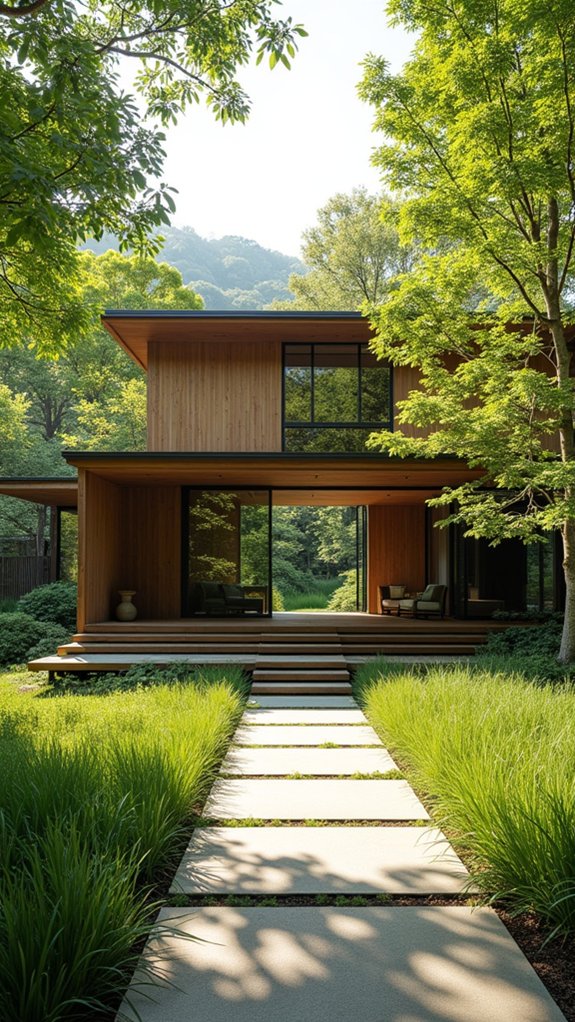
When I step into a modern Japanese farmhouse, I’m often struck by the expansive large windows that invite natural light to flood the interior.
These windows create a seamless connection between the indoors and outdoors, enhancing the sense of space.
I love how they illuminate every corner, making even the simplest design feel warm and inviting, truly embodying the essence of simplicity.
Outdoor Living Areas
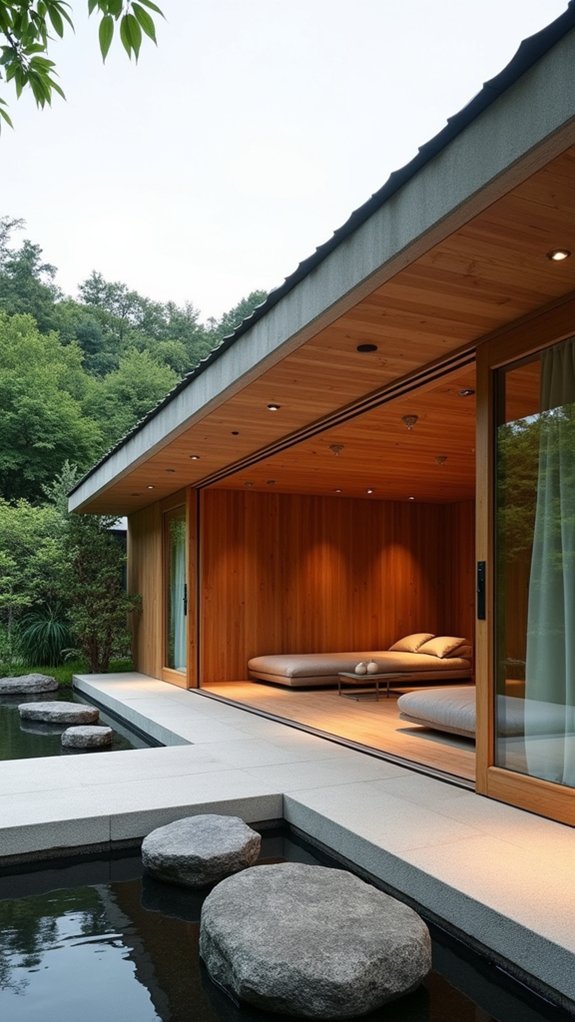
As I step outside, I’m often captivated by the outdoor living areas that seamlessly extend the home’s footprint.
These spaces invite relaxation and connection, blending comfort with nature. I love the simplicity of wooden decks and cozy seating that encourages gatherings.
Whether it’s enjoying a morning coffee or an evening meal, these areas enhance my appreciation for the surrounding environment.
Integration With Surrounding Landscape
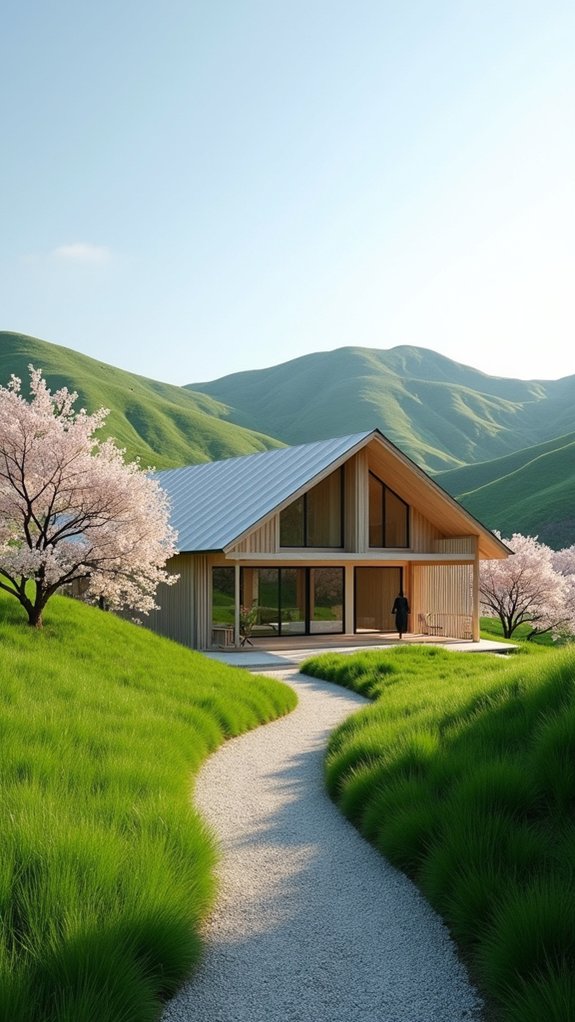
Outdoor living areas naturally lead me to contemplate how modern Japanese farmhouses integrate with their surroundings.
I appreciate the seamless connection between the structures and nature, often using natural materials that echo local landscapes.
The careful placement of windows and terraces invites the outside in, creating a harmonious balance.
The intentional positioning of windows and terraces blurs the boundaries between indoors and outdoors, cultivating a serene and balanced environment.
This design philosophy not only enhances beauty but also fosters a sense of tranquility and belonging.
Simple yet Functional Entrances
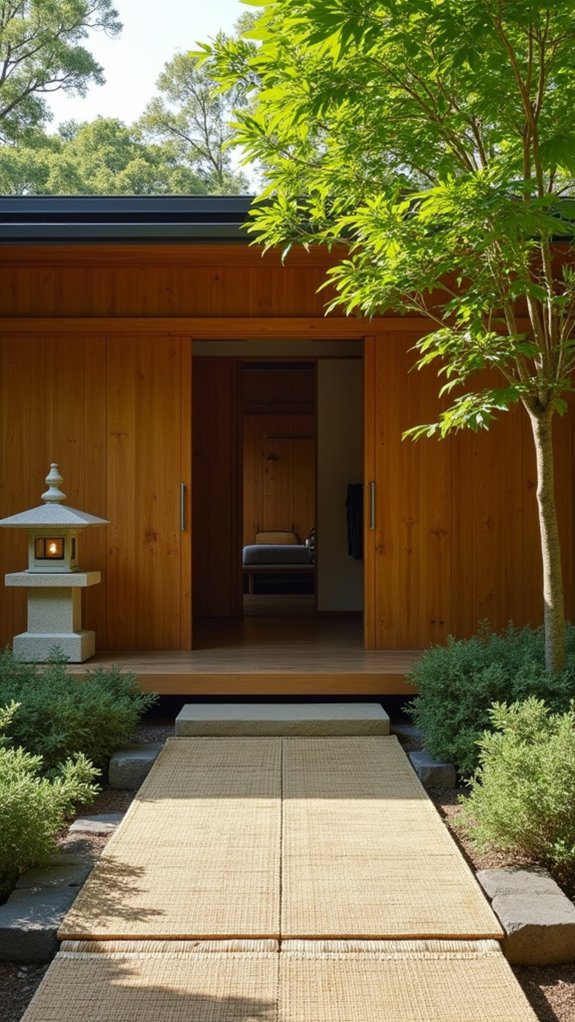
While I admire the beauty of modern Japanese farmhouses, it’s the simplicity and functionality of their entrances that truly captivates me.
These entrances often feature clean lines and natural materials that invite you in. I love how they balance aesthetics with purpose, providing shelter from the elements while maintaining an open feel.
Each door tells a story, welcoming visitors with understated elegance.
Use of Textures in Facades
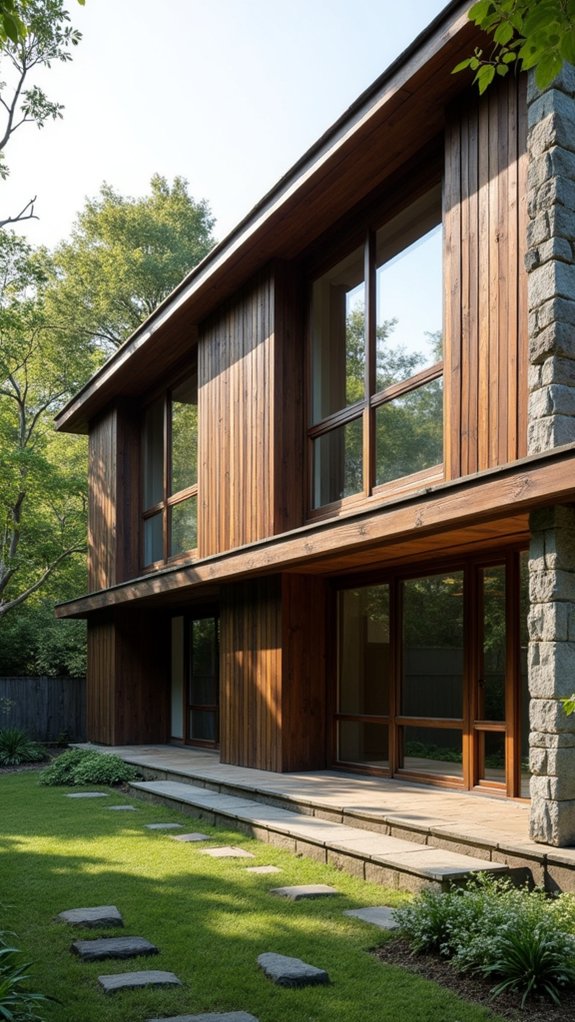
Though I might be drawn to the clean lines of modern Japanese farmhouses, it’s the rich interplay of textures in their facades that truly fascinates me.
The combination of weathered wood, smooth stone, and soft metal creates a tactile experience that invites touch.
Each material adds depth and character, showcasing the beauty of simplicity while celebrating nature’s imperfections in a truly fascinating way.
Customizable Modular Designs
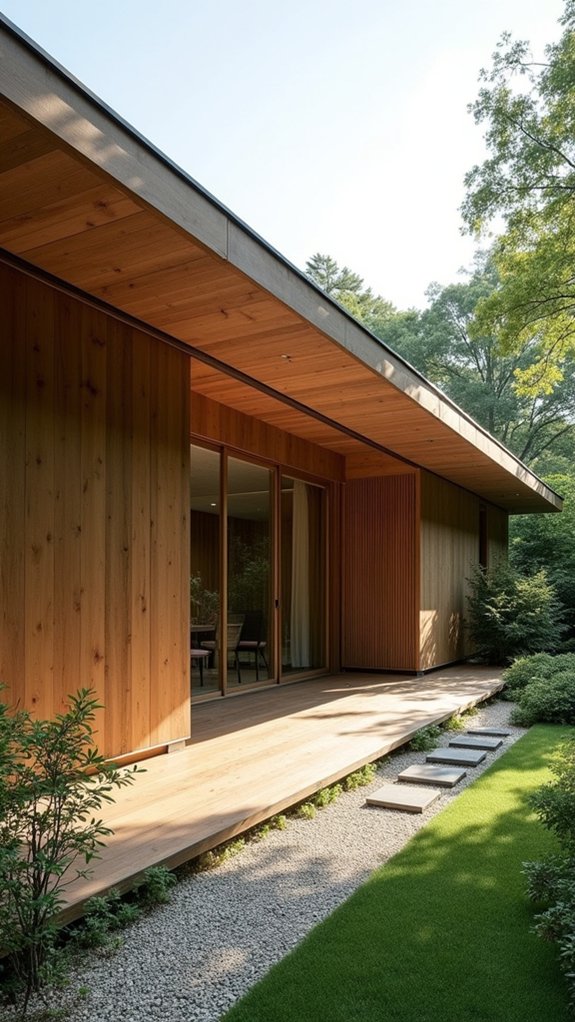
As I explore the world of modern Japanese farmhouses, I can’t help but appreciate how customizable modular designs offer both versatility and functionality.
These designs allow homeowners to adapt their spaces to fit their unique needs. Whether it’s expanding for a growing family or creating a cozy retreat, modular elements provide endless possibilities, making each farmhouse a true reflection of personal style and lifestyle.
Elegant Use of Wood
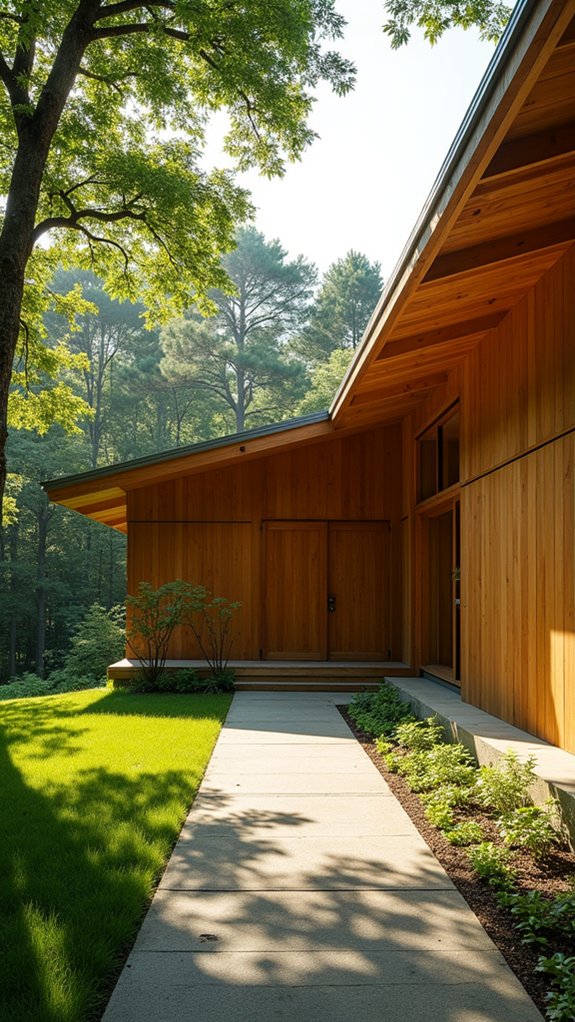
When I think about the charm of modern Japanese farmhouses, the elegant use of wood immediately comes to mind.
Rich wooden beams and natural finishes create a warm, inviting atmosphere.
I love how the wood seamlessly blends with the surroundings, emphasizing simplicity and harmony.
It’s not just a building material; it’s an expression of nature’s beauty that enhances the farmhouse’s character.
Subtle Architectural Details
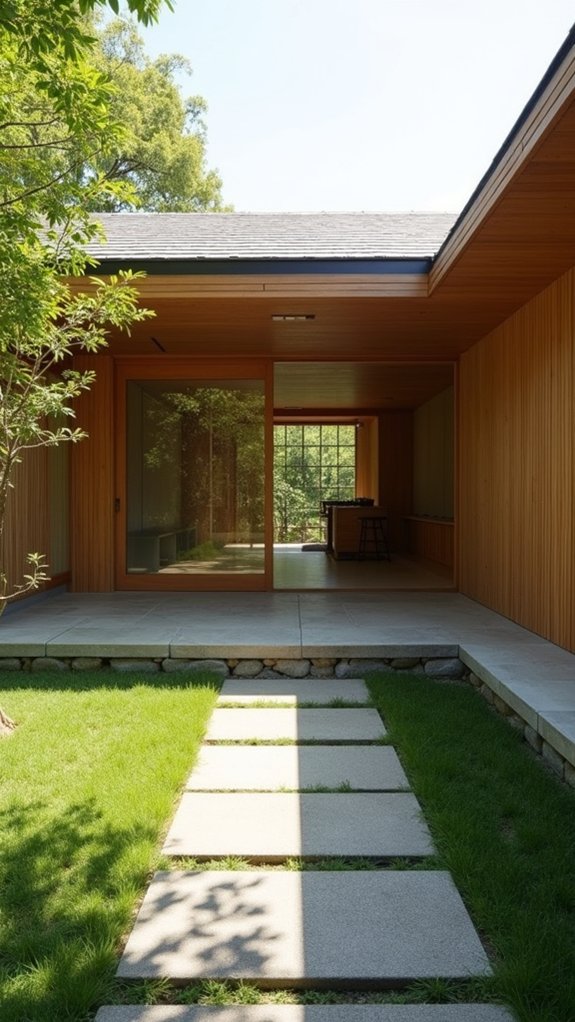
While the overall design of modern Japanese farmhouses often captivates, it’s the subtle architectural details that truly elevate their appeal.
I love how simple elements like carefully placed windows, understated eaves, and textured wall finishes add depth without overwhelming the aesthetic.
These details invite a closer look, revealing a mastery of craftsmanship that reflects a deep respect for nature and tradition.
Eco-Friendly Features
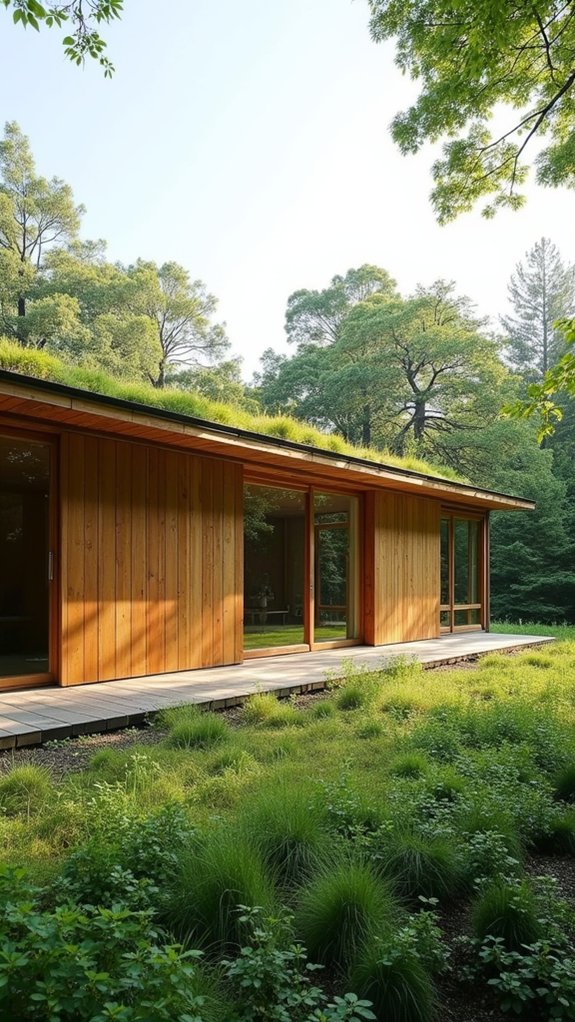
Modern Japanese farmhouses don’t just charm with their aesthetics; they also embrace eco-friendly features that align with sustainable living.
I’ve noticed how many incorporate natural materials like wood and straw, promoting thermal efficiency. Rainwater harvesting systems and solar panels enhance their sustainability.
These thoughtful designs not only minimize environmental impact but also create a harmonious relationship with nature, making them truly inspiring.
Timeless Design Elements
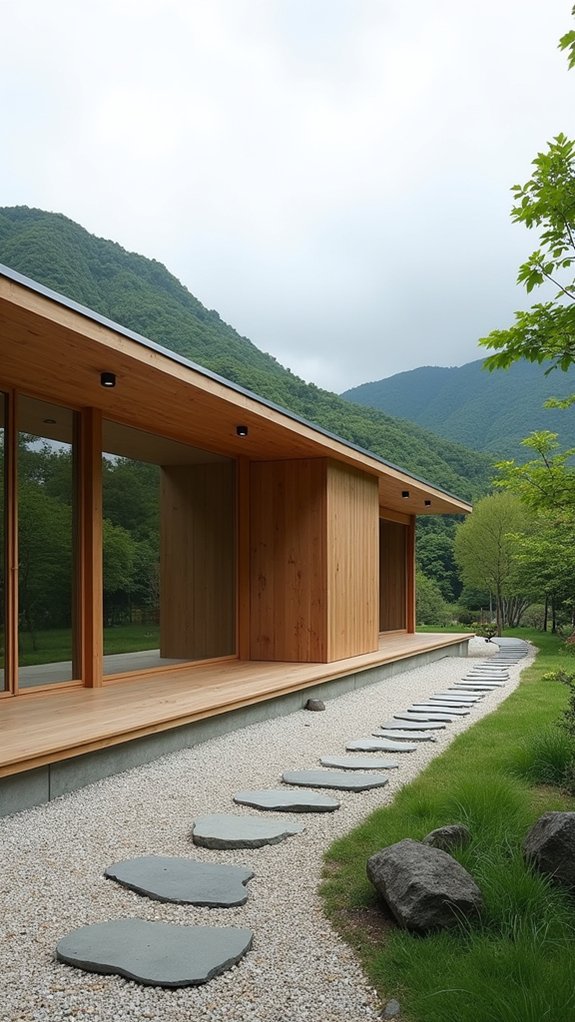
The eco-friendly features of modern Japanese farmhouses beautifully complement their timeless design elements.
I love how the use of natural materials, like wood and stone, creates a warm, inviting atmosphere.
Simple lines and open spaces enhance functionality while maintaining elegance.
These design choices not only honor tradition but also resonate with contemporary lifestyles, proving that simplicity and beauty can coexist harmoniously in our homes.

